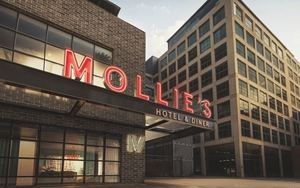MANCHESTER Town Hall competition of 1867 was a juicy one.
To have allowed ornamentation which was tawdry, would have been to brand Manchester as given up to no higher thought than the quickest accumulation of wealth
The old Town Hall from the 1820s on King Street was far too small for what had, in effect, become a city state. Manchester had grown vast in population and the corporation controlled all aspects of city administration, water, gas, police, education, parks, roads and it was rich.
A new Town Hall was desperately needed. The corporation decided it was to be ‘the equal if not superior, to any similar building in the country’.
A two stage competition was announced which influential architectural magazine, The Builder, described as ‘for the age and country an immense innovatory stride’.
The 137 first stage entries were whittled down to eight finalists. These were assessed by two well-known architects and architectural commentators of the time, Professor TL Donaldson and GE Street.

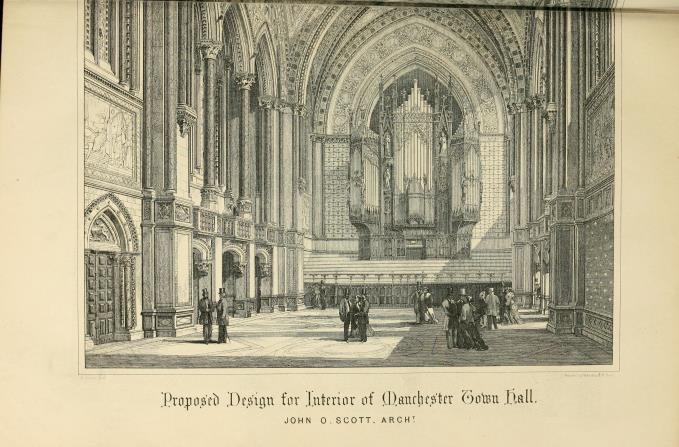 John Oldrid Scott's Great Hall proposal
John Oldrid Scott's Great Hall proposal The Great Hall we got from Alfred Waterhouse
The Great Hall we got from Alfred Waterhouse Given the odd triangular site chosen, the old town yard, were dust carts and the like were stored, it’s no surprise most of the finalists chose the freedom of the Gothic style. The two remaining proposals went for Italian Renaissance.
Donaldson and Street were asked to judge the designs on issues such as the internal arrangement, the provision of natural light, heating and ventilation and the accuracy of the financial estimate. They were also asked to consider ‘the comparative merits of the designs in an architectural point of view’ given the nature of the site, the nearby streets, the climate and its function as a town hall.
They confused everybody with their decision.
The proposals from James Speakman and John Charlesworth, Oldrid Scott and Thomas Worthington, in that order, were considered the best ‘works of art’. So there were howls of derision when the man who had come fourth in terms of architectural beauty, Alfred Waterhouse, carried the day because of his masterly handling of the practical matters of the building. Waterhouse did have form however, having already provided the city with the astonishing Assize Courts building which was demolished after WWII following bomb damage. He was, in effect, a safe pair of hands.
Waterhouse ticked all the boxes in terms of ‘construction, excellence of plan and arrangement, cost, light’. Looking back down six generations it appears Donaldson and Street knew what they were doing. Waterhouse’s building might have lacked some of the romance, even downright eccentricity, of the other entries in the 1867 competition but during planning and construction he tweaked his design to create what has been called, ‘a classic of its age’. In other words his design has proved the most disciplined of the competition entries and the most assured, a building rammed full with dignity, gravitas and genuine beauty.
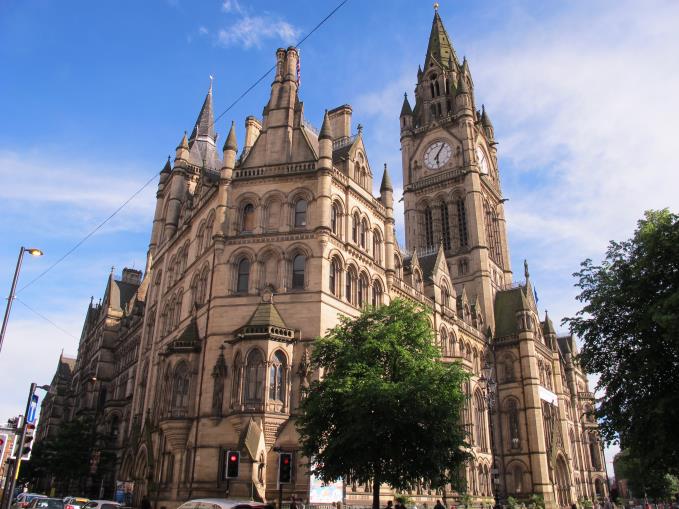 The present Town Hall
The present Town HallIt came at a price though, all paid for by the Manchester rate payer.
The new Town Hall cost £521,357, and with the land, furnishings and fees, more than £850,000. Still that was to be expected if the city had wanted to create something ‘the equal if not superior, to any similar building in the country’.
Abel Heywood was the man who’d guided the town hall to completion. He was the Town Clerk (now with the less civic more commercial name of Chief Executive, the Sir Howard Bernstein of his day) when the project started and the Lord Mayor in 1877 when the building formally opened.
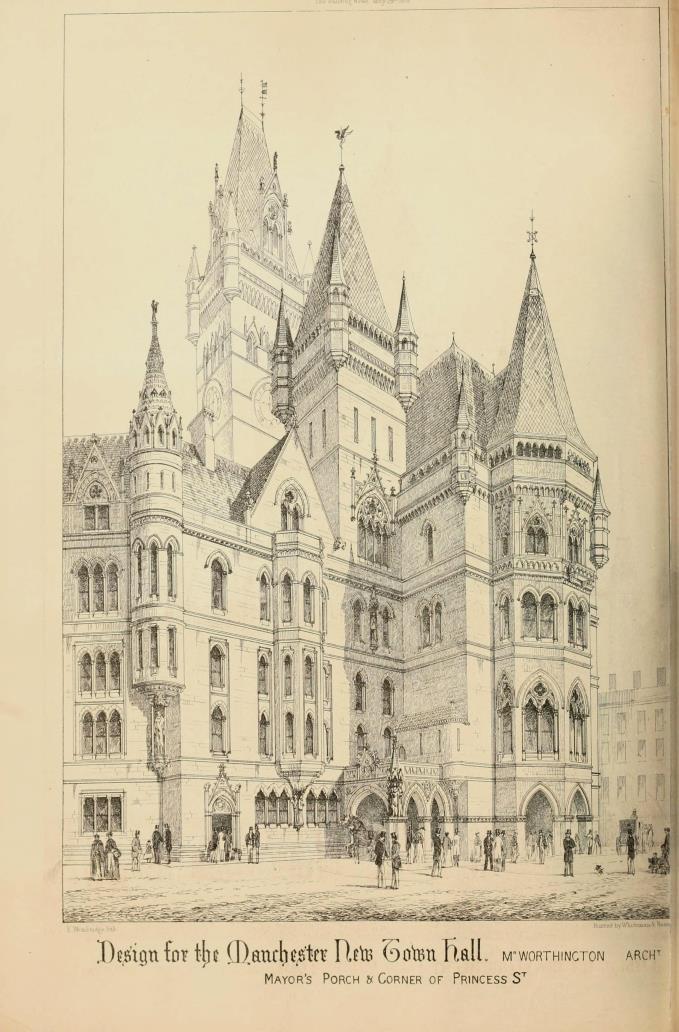 Thomas Worthington's romantic vision
Thomas Worthington's romantic vision His reason or excuse for the overspend is beautifully high-minded and generous.
'We cleared a vast area, and Mr Waterhouse’s beautiful design rose, stone on stone and pillar on pillar. We spared no expense. Every detail we desired to have perfect. To have been parsimonious, to have neglected corners or recesses which were obscure, to have allowed ornamentation which was tawdry, would have been for ever to brand Manchester as a city given up to no higher thought than the quickest accumulation of wealth.'
The first officail guest in the Town Hall was Ulysses S Grant, the man who'd won the American civil war for Abraham Lincoln, and the 18th president of the USA - as Confidential recently revealed here.
Of the designs that failed, the craziest was Edward Salomons’ strange Renaissance entry with its heavy and bulbous profile and elaborate detail. This is a mad fantasy design that if nothing else, makes you smile. The most romantic was Thomas Worthington’s which was described by the Manchester Guardian as ‘a Rhineland vision’.
Meanwhile the ‘art’ winner from Speakman and Charlesworth is undeniably powerful with its row of statues at second floor level, its deeply cut arcade of Venetian Gothic first floor windows and proper-wow loggia-like porch and entrance.

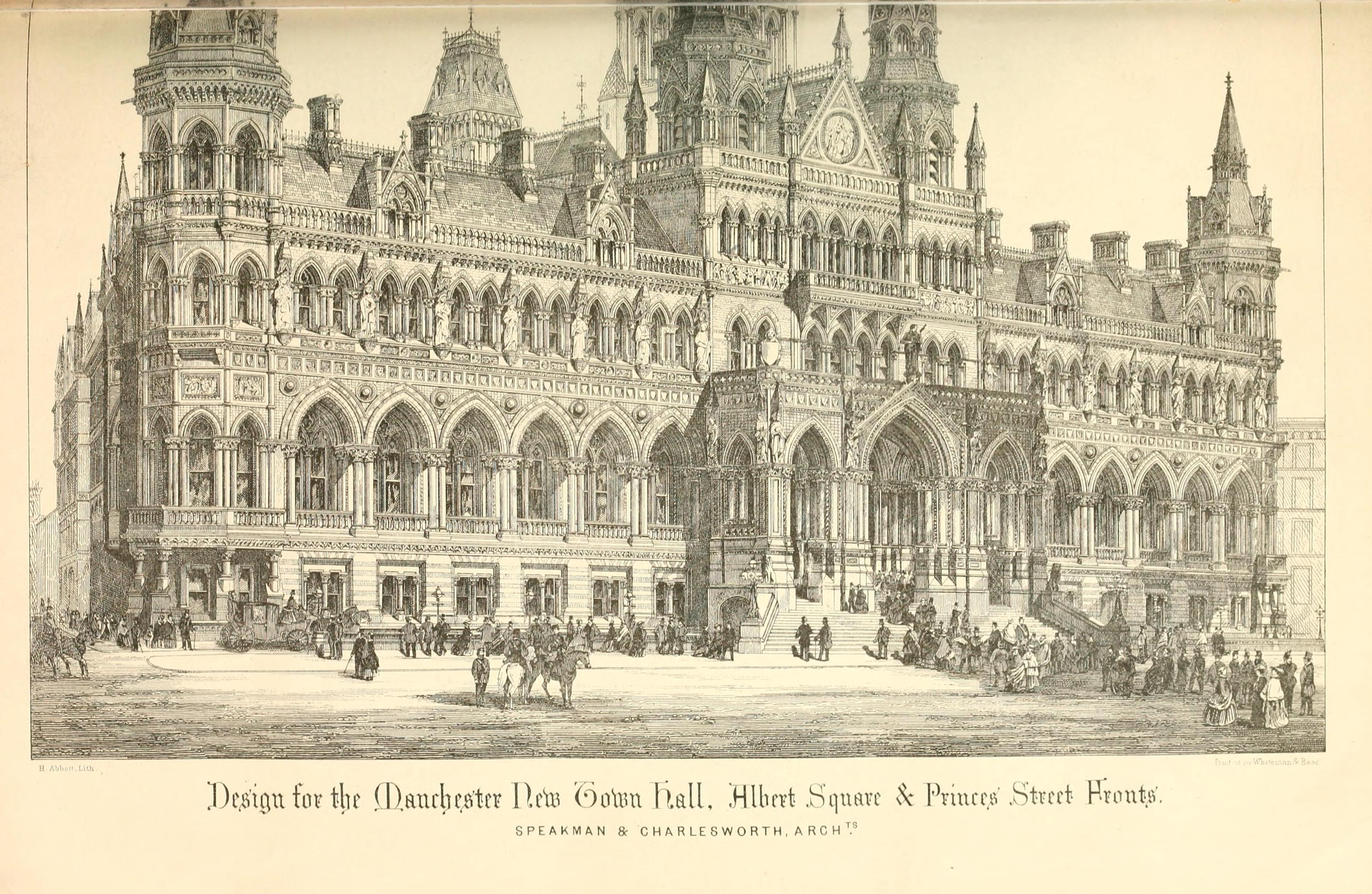 Speakman and Charlesworth's very ornate design
Speakman and Charlesworth's very ornate design Speakman and Charlesworth and Thomas Worthington might have lost out but they do have a presence in Albert Square. The former designed Lloyds House, presently hosting Reds restaurant, while the latter designed Memorial Hall (now Albert’s Chop House), the Albert Memorial in the centre of Albert Square and the Jubilee Fountain. Some consolation for not winning the big one.
A curious side debate was over the name of the new administrative building. Since Manchester had been formally recognised as a city for over twenty years why was the old form of the name 'Town Hall' being used and not the more correct 'City Hall'? There were letters to the Manchester Guardian. One correspondent giving themselves the pseudonym 'A spade a spade' thought it 'plainly ridiculous that the old usage should persist and diminish the respect due to both the corporation and the building'. But persist it did apparently through usage rather than choice.
This story comes from Jonathan's look back at 'the city that was and the city that might have been'. You can buy the full book here, Lost and Imagined Manchester, through Manchester Confidential.
 Edward Salomons' weird design
Edward Salomons' weird design











